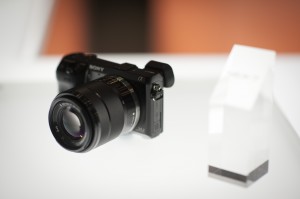 I recently made a fairly extensive post on facebook answering the question “Can anyone recommend a good but fairly inexpensive DSLR?” Since it was really detailed, I figured I’d repost this to share this wisdom with the rest of you. Note that this is published mid-2012, so if you’re reading this a year from now, don’t expect it to still be relevant. Also note that these are just cameras that have piqued my interest for various reasons, and I don’t receive any endorsements from them or give endorsements. Also, the quality of your photos relies on your own photographic technique. Ansel Adams once said that the most important part of a camera is the six inches behind the viewfinder.
I recently made a fairly extensive post on facebook answering the question “Can anyone recommend a good but fairly inexpensive DSLR?” Since it was really detailed, I figured I’d repost this to share this wisdom with the rest of you. Note that this is published mid-2012, so if you’re reading this a year from now, don’t expect it to still be relevant. Also note that these are just cameras that have piqued my interest for various reasons, and I don’t receive any endorsements from them or give endorsements. Also, the quality of your photos relies on your own photographic technique. Ansel Adams once said that the most important part of a camera is the six inches behind the viewfinder.
For reference, my current camera setup (once I have it in my hands in a few days) is a Nikon D800 with about $16k in lenses, so to me, everything below is pretty cheap. This is, of course, all relative. With that, here’s the post:
Fanboy-isms aside, pretty much all dSLRs are good depending on what you want. Here are a few things to consider (there are exceptions to these rules, but these are certanly true more often than not):
- The older the camera/the higher the megapixel count/the smaller the sensor, the worst it’s going to be with things like low-light shooting, color accuracy and dynamic range.
- If you like shallow depth of field (really blurry background) go with 35mm (full frame) format or larger.
- Many older Canon cameras have autofocus issues, particularly the 5DmI/II
- Only the latest generation of Nikon cameras have good video modes
- Only single and triple number Nikons (e.g. D300, D700, D4, D2x) can autofocus with AF-D lenses with the exception of the D70, D80, D90, and D7000
- Nikons prior to the D3/D300 generally have poor sensors
- Mirrorless systems will give you a much more compact/less expensive camera, but won’t focus as fast
- Sony SLT cameras are great for shooting video with autofocus due to full-time phase detect autofocus, but trade it for minimal degredation of light transmission and sharpness
- You can mount a Nikon lens on just about anything, but not a Canon lens
- Speaking of lenses, if your camera costs significantly more than your lens collection, you’re doing it wrong.
That said, here are a few recommendations based on different priorities
- If you’re only shooting stills in fairly good light or studio situations where you have plenty of time to compose and shoot, go with a used Canon 5Dm1 with a few prime lenses like the 50mm f/1.4 (should be able to get one for around $1k)
- If you’re only shooting stills, like shallow depth of field, but also want really good low light performance, go with a used or refurbished Nikon D700 with one or more of the AF-S f/1.8 lenses they came out with in the past year (maybe around $2k)
- If you need a good balance of features, usability, and price, go with a camera like the Nikon D7000 (or the Canon equivalent) ($1200 body only)
- If you need something with good video capabilities, but don’t want to get too technical with your shooting or lens selection, go with the Nikon D5100 or D3200, or a low-end recent Canon dSLR. (<$1k)
- If you want something super compact but want all your manual controls and high quality stills/video, go with the Sony NEX-7 ($1350 w/lens kit)
- Same as above but not concerned with manual controls, go with the Sony NEX-5n or NEX-3 ($599 ish)
- If you want even less expensive and smaller, take a look at the micro four-thirds cameras. I don’t have as much experience there so that’s up to you.
If those prices seem too steep to you, or you’re looking at something else, look at the higher list of considerations. You can also go with film and pick up Nikon’s FM-10 brand new with a 35-70mm lens and leather case for a little under $400 (yes, they still make them. it’s a great starter camera for students).

Pingback: The Camera Kit | Blue Sky Above and a Camera Kit